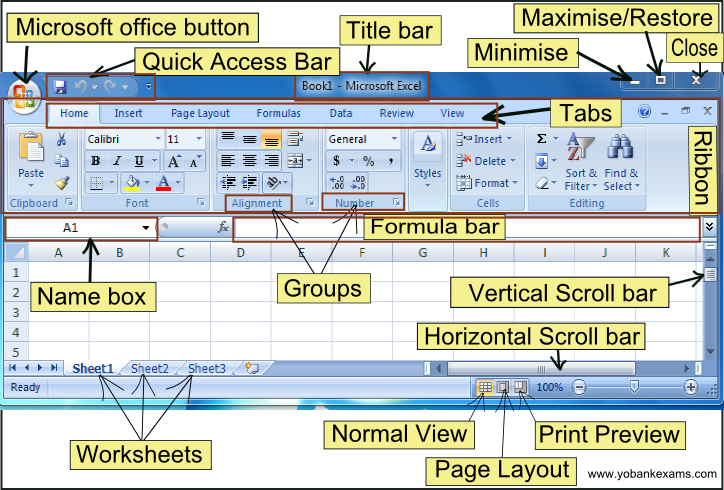

You can change the width of a cell by dragging its right edge. You can't format different numbers, letters, or words within a cell differently, so the entire cell is going to have the same font size, bolding, and text color. One thing to keep in mind is that Excel treats a cell as an indivisible unit. You can also shade and color text and cell backgrounds.

Click the Home tab to get access to a variety of common formatting tools, like bold, italic, underline, and font size options. In a lot of ways, Excel is similar to Word when it comes to formatting and arranging the content of cells. For example, Sheet1 can use data stored on Sheet2 for a calculation.Īlso at the bottom of the screen, on the right side, you'll see icons to change the view - you can see print previews of the spreadsheet, for example, and use the zoom slider to change the size of the spreadsheet on your screen. Each sheet can be named (double-click in a tab to type a new name) and worksheets can be deeply connected with one another. You can add additional worksheets to a workbook using the plus "+" sign at the bottom of the screen, and switch among them using the tabs. A workbook is a spreadsheet that is composed of one or more worksheets - by default, a new workbook opens with a single worksheet. If you don't want any existing template or Excel file, choose "Blank workbook."Īfter you're on Excel's main interface, let's take a quick look around and review some of the most common terminology.Īn Excel document is referred to as a workbook. You can open a new workbook, or pin an existing one to your list of Recents for easy access.


 0 kommentar(er)
0 kommentar(er)
